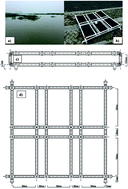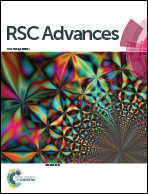Acclimated sediment microbial fuel cells from a eutrophic lake for the in situ denitrification process
Abstract
Sediment microbial fuel cells (SMFCs) with various external resistances were acclimated at the north of Lake Taihu for two months. Then, each SMFC was transferred to a container and operated in batch mode for evaluating its electrochemical and denitrification performances. The nitrate removal efficiencies of SMFCs that were connected to the external resistances of 510, 100, 51, 10 and 1 Ω were 12%, 20%, 32%, 42.1% and 60%, respectively. Conversely, the nitrate concentration increased by 0.05 mg L−1 for the SMFC with 1000 Ω external resistance. The microbial community of the biocathode in the SMFC with 1 Ω external resistance was determined. Proteobacteria (48.04%), Bacteroidetes (9.87%) and Chloroflexi (9.8%) were identified as the dominant phyla. The microbial community analysis and half-cell tests revealed that the acclimated biocathode could simultaneously promote a denitrification reaction and an oxygen reduction reaction. In addition, Nitrosomonadales and Nitrospirales on the biocathode facilitated the ammonia oxidation reaction which caused a mixed potential. The mixed potential was enhanced by increasing ammonia concentration and decreased the biocathode performance.


 Please wait while we load your content...
Please wait while we load your content...